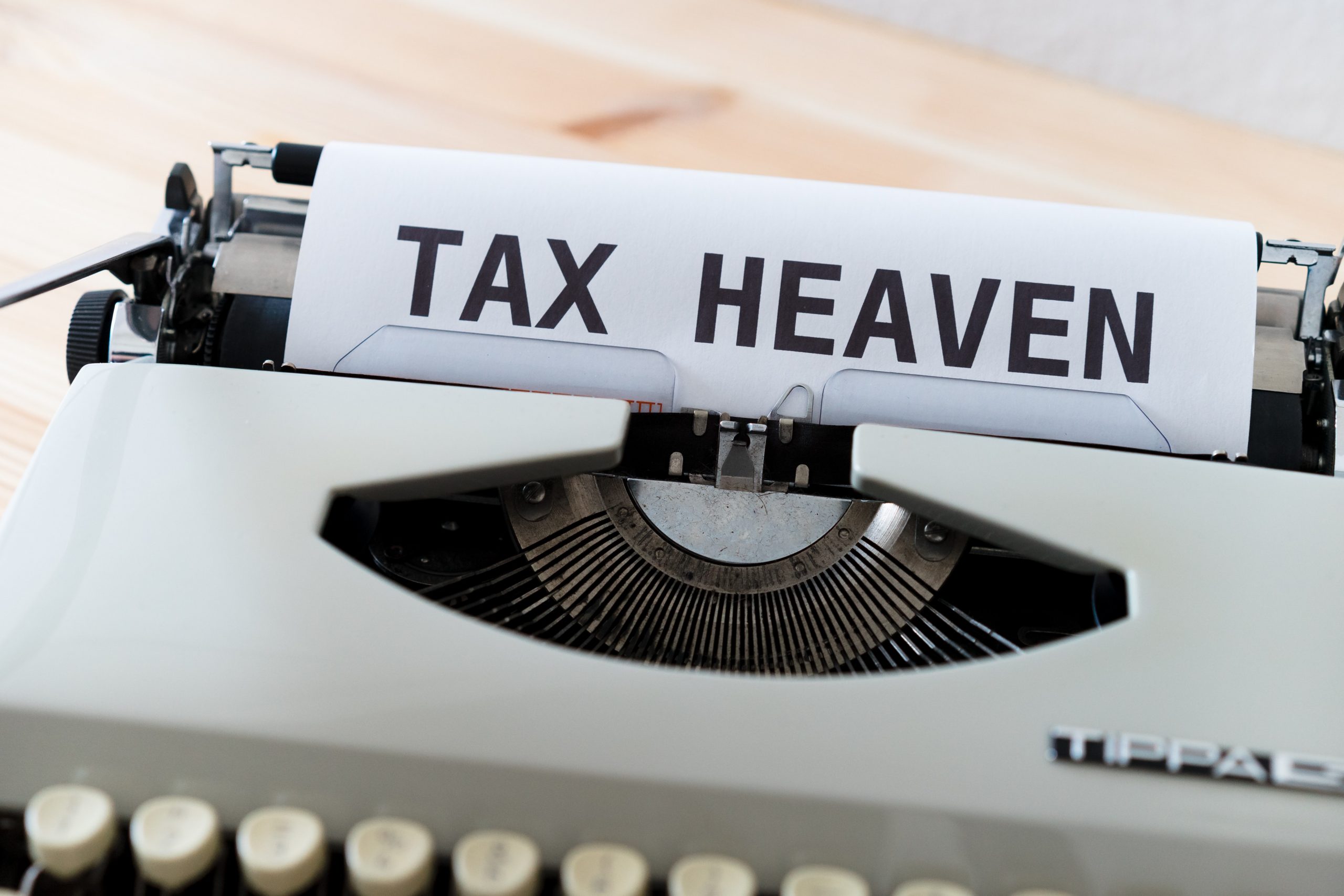-
22Jan2021
Sorting Out Late Tax Returns – It’s Easier Than You Think

Sorting Out Late Tax Returns
It’s Easier Than You Think
In 30 years of preparing tax returns, some of the most relieved and happy clients you come across are those whom we have helped “catch up” and lodge late tax returns. Apart from straight out forgetfulness, failure to lodge a return can happen for a variety of reasons, including illness or any other adverse change in personal circumstances.
Sometimes people move overseas for a time period and don’t realise they still have obligations to lodge an Australian tax return. For most, the obligation to lodge a tax return will not go away despite how many years you delay and/or the reasons for the delay. The Tax Office will eventually catch up with you.
All you achieve by delaying your lodgements is cause yourself worry, risk late fees, and the potential that your records – particularly legitimate deductions – may be lost or destroyed. But putting yourself in the hands of an experienced tax professional can make the journey can be a lot less painful than you imagine.
Consider the following testimonial we have recently received from a client, who was four years behind with their returns.
“We were recommended to use Affinitas Accounting by a friend. From the first contact, Debbie was friendly, professional, very efficient, and extremely knowledgeable in her field. She took us on as expats needing to complete our last four years’ worth of income tax returns and was so patient and helpful when we had to get all our documents sorted and what she needed to complete the return. Even though the timeframe had us close to the Christmas break, she worked overtime to have it complete for us and ready to submit before the new year. We cannot recommend her company enough and will definitely be using her services each year from now on.”
So if you are late with your tax returns (or you know someone who is) then make getting up to date your New Year’s resolution. Contact us on 07 3510 1500 or


-
16Dec2020
All We Want for Xmas is a Good Vaccine

All We Want for Xmas is a Good Vaccine
After a year like no other, 2020 Christmas wish lists are likely to include a lot of non-material requests for Santa to fulfill.
The usual wish-list of bright shiny new things could be replaced by hopes for:
- an effective COVID-19 vaccine,
- a safe environment for my friends and family,
- the opportunity for every person to use their abilities and make a genuine contribution to the greater good, and
- a return to the days when leadership was about the capacity to bring people together and push forward rather than conquer and divide.
This Christmas list is reflective of 2020 – the year has taught us resilience and patience.
We have all had a stark reminder of what is really important in life. We have learned some painful lessons that life is not always a constant, consistent path.
Maybe the takeout from 2020 is to approach life like an optimist, but plan like a pessimist – personally and professionally.
Planning like a pessimist does not mean succumbing to disaster, but rather the opposite. Planning like a pessimist is about always making sure you have capital, capacity and personal reserves to get through an unexpected shock.
So, here is to a fresh start with renewed energy and vigour in 2021. Stay safe, stay well and we will look forward to working with you again in the New Year to make the most of the opportunities available to you on your pathway.
To read more about some of the opportunities and challenges for 2021, click on the following link:
2021 – Risks & Opportunities Emerging From 2020
Office closure
Our office will be closed for Christmas from 5pm Tuesday, 22 December and will reopen from 8am on Wednesday 6 January 2021.
Meanwhile, a few reminders about things you might wish to attend to before you start your Christmas break.
Extended dates for December JobKeeper figures
The ATO has extended the JobKeeper monthly business declaration deadline for the month of December until 28 January 2021 (from 14 Jan 2021). This applies to the JobKeeper fortnights ending on 6 December 2020 and 20 December 2020.
The deadline for meeting the minimum wage condition for the JobKeeper fortnight ending on 3 January 2021 has been extended to Monday, 4 January 2021.
NB: Remember, even if you have not qualified for JobKeeper in the past, you may still be able to qualify based on your latest business results.
First JobMaker Deadlines Looms
Currently, 6 January 2021 is the final day of the first JobMaker Hiring Credit period and the deadline for enrolling in the scheme to access payments for this period.
While the ATO has the ability to extend this deadline, there has not been any advice on this to date. Enrolments are not open as yet, but because of the tight turnaround times, if your business would like to access JobMaker for the first period, it will be important to assess eligibility.
NB: If you think there is any chance whatsoever that you might qualify for JobMaker, make sure to register online for the scheme by 6 January 2021. There are no penalties if you register, but do not end up using the scheme.
Also, it is worth noting that Federal Government incentives generally do not overlap.
That is, your business cannot receive incentives for BOTH JobKeeper and JobMaker, or BOTH JobMaker and an apprenticeship subsidy.
Last Chance to Access: COVID-19 Early Access to Super
For anyone still considering accessing superannuation early under the COVID-19 early access measures, 31 December 2020 is the last day you can apply. Those wanting to access their superannuation pre-Christmas needed to have completed the application by 11 December 2020.
The ability to access up to $10,000 of your super is available to those that have been made redundant, have had their working hours reduced by more than 20%, and have been adversely financially impacted by COVID-19.
If you are not in financial hardship you should not access your superannuation. The application process through myGov is a self-assessment process that you are responsible for. Penalties of up to $12,000 may apply for providing false or misleading information.
Source; Knowledge Shop Newsletter Dec 2020. NB: The material and contents provided in this publication are informative in nature only. It is not intended to be advice and you should not act specifically on the basis of this information alone. If expert assistance is required, professional advice should be obtained.

Contact Us If you Need Help
For help with tax debt payment plans and JobKeeper, contact 07 3510 1500 or email
Office closure
Our office will be closed for Christmas from 5 pm Tuesday, 22 December and will reopen from 8 am on Wednesday 6 January 2021.

-
16Dec2020
2021 – Risks & Opportunities Emerging From 2020

2021 – Risks & Opportunities Emerging From 2020
All social and economic disruptions come with their own unique set of related risks and opportunities.
After weathering Australia’s Covid 19 experience, the borders between the states and territories are now all-but open. The year 2021 is in sight and there is a hunger for a return to ‘normal’. The recent Westpac-Melbourne Institute Index of Consumer Sentiment articulates this desire to ‘get on with things’; sentiment reached its highest level since November 2013 and Christmas spending is expected to be consistent with previous years.
However, the Reserve Bank of Australia cautions that the post-2020 recovery will be uneven and drawn out and GDP is not expected to return to pre-pandemic levels until the end of 2021. The risks are not limited to the pandemic but Australia’s geopolitical relationships, notably with our largest trading partner, China.
Here is a list of key risks and opportunities as we head into 2021:
Opportunities
Employers & Job Building
Reducing unemployment is a national priority. While the unemployment rate is expected to decline in 2021, further rises are expected as businesses restructure in response to the pandemic. Wage growth will also be subdued with excess capacity in the market.
New analysis from the Reserve Bank of Australia suggests one in five jobs were saved by JobKeeper. The RBA November 2020 analysis states: “One in five employees who received JobKeeper (and, thus, remained employed) would not have remained employed during this period had it not been for the JobKeeper Payment. Given that 3.5 million individuals were receiving the payment over the period from April to July 2020, this implies that JobKeeper reduced total employment losses by at least 700,000 over the same period.”
The number of businesses accessing JobKeeper reduced by around 450,000 in October 2020, with the transition to more stringent eligibility requirements.
In 2021, the focus will be on creating jobs, not just keeping them. To this end, there are a number of incentives for employers to grow employment and skills:
- JobMaker – A 12 month “hiring credit” available for jobs created from 7 October 2020 until 6 October 2021 that provides a payment to employers of $200 per week for eligible new employees aged between 16 and 29, and $100 per week for eligible employees aged between 30 to 35 years. Eligibility restrictions apply to the business and the employee. Employees need to have been out of work and receiving Government support for at least one month within the three months before they were hired.
- Apprenticeship subsidies – subsidies of 50% of an apprentice’s wage (up to $7,000) are available for new and existing apprentices to keep them employed. The schemes apply to the wages of new apprentices from 5 October 2020 and 30 September 2021, and existing apprentices from 1 January 2020 to 31 March 2021. Eligibility requirements apply to the business and the apprentice.
In addition, subsidies are available for employers engaging apprentices in key industries with skills shortages including carpenters and joiners, plumbers, hairdressers, plasterers, bakers and pastrycooks, vehicle painters, wall and floor tilers, arborists, bricklayers and stonemasons and air-conditioning and refrigeration mechanics.
There is also additional support for adults reskilling and undertaking an apprenticeship and for apprentices with a disability.
- State based incentives – Tax breaks to encourage employers to employ more workers are big right now. The Victorian government recently announced a New Jobs Tax Credit for SMEs of ten cents for every dollar of increased taxable Victorian wages. NSW has reduced payroll tax to 4.85% from 5.45% from 1 July 2020. There also are many incentives targeted to specific areas and economic sectors. WA has an Employer Incentive Scheme with a base payment of $8500 for employing apprentices. It is worth seeing what is available in your region and in your industry.
NB: It is worth noting that Federal Government incentives generally do not overlap. That is, your business cannot receive incentives for BOTH JobKeeper and JobMaker; or BOTH JobMaker and an apprenticeship subsidy.
First JobMaker deadline looms
6 January 2021 is the final day of the first JobMaker Hiring Credit period and the deadline for enrolling in the scheme to access payments for this period. While the ATO has the ability to extend this deadline, there has not been any advice on this to date. Enrolments are not yet open, but because of the tight turnaround times, if your business would potentially like to access JobMaker for this first period, it will be important to at least get your business registered by 6 January. There is no penalty if you register and do not use the scheme.
For individuals, the JobTrainer programme provides those aged between 17 and 24 the ability to upskill or reskill, at minimal cost.
HomeBuilder & the Housing Industry
The HomeBuilder scheme provides a tax-free grant to those building a new home or renovating. To date, around 27,000 homes are expected to be covered by the scheme. The highest number of applications so far have come from Victoria (7636), followed by Queensland with 5954. New South Wales property prices mean that many homes exceed the eligibility threshold (4350).
The Assistant Treasurer recently announced an extension of the HomeBuilder scheme from 1 January 2021 to 31 March 2021. For all new build contracts signed between 1 January 2021 and 31 March 2021:
- Eligible owner-occupier purchasers will receive a $15,000 HomeBuilder grant (down from $25,000); and
- The property price caps for new builds in New South Wales and Victoria will be increased to $950,000 and $850,000 respectively (from $750,000).
In addition, the construction commencement deadline will be extended from three months to six months for all eligible contracts signed on or after 4 June 2020 (applications for HomeBuilder can be submitted up to 14 April 2020).
There is also a change in the licensing requirements and registration for builders and developers:
- Where an eligible contract is signed on or after 29 November 2020, the builder or developer must have a valid licence or registration before 29 November 2020
- Where an eligible contract is signed before 29 November 2020, the builder or developer must have a valid licence or registration before 4 June 2020
The eligibility criteria to access HomeBuilder remains the same. To be eligible you need to be an individual owner-occupier, 18 years of age or more, an Australian citizen, and pass the income test. The income test for individuals is $125,000 and $200,000 for couples (based on your 2018-19 or later tax return).
The grants are available if you build a new home where the value of the house and land does not exceed the threshold ($750,000 to $950,000 depending on when the contract was signed and the State you live in), or a renovation where the value of the property is $1.5m or less.
Extended rules for writing off assets: Australian subsidiaries of global companies to benefit
In the 2020-21 Federal Budget, the Government introduced a measure that allows businesses with turnover under $5bn* to immediately deduct the cost of new depreciable assets and the cost of improvements to existing assets in the first year of use. This means that an asset’s cost will be fully deductible in the year it is installed ready for use, rather than being claimed over the asset’s life. And, there is no cap on the cost of the asset.
Last month the Government announced it will modify the rules again enabling a broader range of businesses to access the instant write-off.
The amended rules will enable businesses with an aggregated annual turnover of $5bn or more (the current maximum threshold) to access the measures if they can satisfy an alternative test. Entities are able to pass this test if they have:
- Less than $5 billion in total statutory and ordinary income in either the 2019 or 2020 income year; and
- Incurred more than $100 million in expenditure on tangible depreciating assets between the 2017 and 2019 income years.
This will allow some Australian businesses that are connected with large global groups to access the measure. In addition, the Government will enable businesses to opt-out of using the new instant asset write-off and accelerated depreciation rules on an asset by asset basis.
Currently, the rules apply automatically if certain conditions are met, which for some businesses is not an effective use of the deduction. However, at this stage, it appears the choice to opt out of the instant asset write-off might not be available to small business entities that choose to apply the simplified depreciation rules.
Discussing the best use of these new depreciation rules should be part of the annual tax planning conversation you have with your tax accountant.
*Aggregated turnover. Aggregated turnover is your turnover plus the annual turnover of any business connected with you or that is your affiliate.
The Risks
COVID-19 rules and regulations
Despite feeling like we are emerging from the pandemic, the promise of a widely available vaccine is still over the horizon and the risk of another wave remains very real. For business, it will be essential to ensure that COVID-19 safe conditions are maintained.
Aside from the obvious health risks of not maintaining a safe environment, a lockdown risks your business’s survival, and the fines for breaching public health orders are hefty. According to an ABC report, “more than $5.2 million has been raked in (in fines) nationwide since pandemic laws came into effect in March this year.”
In most regions, fines of around $1,000 apply to individuals and $5,000 for businesses and in Queensland, fines of up to $13,345 and prison might apply to individuals and business operators flagrantly defying the heath order.
Cashflow crunch
Australian economists are united in the view that there are a number of “zombie businesses”, only being kept alive by JobKeeper. These are the businesses that are only surviving because salary and wages are propped up by the subsidy.
The danger with these businesses is that they are continuing to take on debt. JobKeeper ends in March 2021, which coincides with one of the traditionally worst cashflow months of the year.
It will be important to ensure that your business stays on top of its debtors and does not become a bank for your customers. It will also be important to understand your cashflow position. Do not over-commit and stay on top of labour costs.
Reach Out For Help
As accountants, we cannot run your business for you. But we are professionals who have skills in cashflow management and can help you analyse the numbers that can assist you to review and predict the performance of your business. Contact Affinitas Accounting on 07 3510 1500 or
Australia’s relationship with China
At Christmas time, many people re-watch the film Love Actually. Apart from all the feelgood rom-com moments, there is a scene where the British Prime Minister (played by Hugh Grant) is asked about his views on the Britain-US relationship following a particularly disappointing trade negotiation:
“I love that word ‘relationship’; covers all manners of sins, doesn’t it? I fear this has become a bad relationship. A relationship based on the President taking exactly what he wants, and casually ignoring all those things that really matter to Britain.
“We may be a small country, but we’re a great one too. A country of Shakespeare, Churchill, The Beatles, Sean Connery, Harry Potter, David Beckham’s right foot, David Beckham’s left foot.
“A friend who bullies us is no longer a friend. And since bullies only respond to strength, from now onward I will be prepared to be much stronger. And the President should be prepared for that.”
In the movie, the only reaction from the US was a stern look from the President (played by Billy Bob Thornton). However, the reality of megaphone diplomacy is very different.
Regardless of whether or not we support the stand taken by our government, non-compliance with China’s political will comes at a cost. In response to Australia’s public positioning, China has flexed its economic muscle through the disruption of Australian exports. Consider the following:
- April – Australia pushes for a formal WHO inquiry into the origins of COVID-19.
- May – 80.5% tariff on Australian barley on the basis that barley is undervalued and subsidised. China imports approximately 70% of Australia’s barley crop.
- May – Suspension of beef exports from four Australian processing plants relating to a 2019 investigation regarding inconsistencies with labelling and consignment certificates for some frozen and chilled beef products. China is the largest importer of Australian beef at 24%. Japan is second at 23% and the USA at 20%.
- September – China states that Australian exports of wheat will face “enhanced inspection.” At the same time, wheat imports from the US to China have increased.
- October – Chinese importers unofficially instructed to stop buying seven types of Australian exports – coal, barley, copper ore and concentrate, sugar, timber, wine, and lobster. Goods in transit at the time the ban was imposed have been in limbo – $2m of rock lobsters were left on the tarmac unable to clear customs at Shanghai Airport.
- November – 107% to 212% “provisional” tariff imposed on Australian wine on the accusation that Australian wine is being dumped on the Chinese market causing “substantial” damage to Chinese wine manufacturers. Treasury Wine Estate, which makes Penfolds, and represents an estimated 40% of the total annual wine export market to China, went into a trading halt after China’s announcement.
China is Australia’s largest trading partner by a margin that dwarfs trade with any other single nation (Europe $118bn, ASEAN $110bn and Japan $77bn). The value of exports to China has doubled in the five years since the signing of the China-Australia Free Trade Agreement from $75b in 2014-15 to $150b in 2019-20; imports have also grown significantly up 42% over the same period.
Iron ore remains Australia’s top export to China (in 2019-20, exports of iron ore accounted for 56% of all Australian goods exported to China) and a high demand resource to fuel the expansion of China’s economy – China is the world’s largest steel producer. The South China Morning Post reports that Australian iron ore makes up 60% of China’s supply.
It is not the first time China has undertaken a concerted campaign to use its economic might to secure its policy goals. Canada, India, the UK and New Zealand have all faced some form of retribution in the past. During a speech to the Press Club in August, Minister Wang Xining stated that any long term relationship is based on “mutual respect”. Australia’s perceived lack of respect was highlighted by the 14 grievances leaked by a Chinese diplomat to television station Channel Nine.
These grievances, according to this leaked document, are wide-ranging – from the banning of Huawei from Australia’s 5G networks on “unfounded” national security concerns, foreign interference laws (initiated with the establishment of the Counter Foreign Interference Taskforce focussed on democratic institutions, education and research, media and communications, diverse communities, and infrastructure), calls for an inquiry into COVID-19 and siding with the US anti-China campaign, speaking out on the contested South China sea territories and “thinly veiled” allegations against Chinese cyberattacks.
So, what does 2021 hold for our Australia-China relationship?
There is conciliatory language from the Australian Government with both the Prime Minister and the Defence Minister acknowledging China’s economic success lifting millions out of poverty and our strong ‘people to people’ relationship. But Australia has not publicly backed down or been any less vocal with the announcement of a new defence pact with Japan and a continued pro-democracy stance on Hong Kong.
There is likely to be more pain to come for Australian exports to China and no short-term resolution or conciliation. Watch this space – as the old Chinese proverb goes: “We live in interesting times”.
Source; Knowledge Shop Newsletter Dec 2020. NB: The material and contents provided in this publication are informative in nature only. It is not intended to be advice and you should not act specifically on the basis of this information alone. If expert assistance is required, professional advice should be obtained.

Contact Us If you Need Help
For help with tax debt payment plans and JobKeeper, contact 07 3510 1500 or email
Office closure
Our office will be closed for Christmas from 5 pm Tuesday, 22 December and will reopen from 8 am on Wednesday 6 January 2021.

-
11Nov2020
Get Ready for ATO Payment Plans – with Strings Attached!!!

Get Ready for ATO Payment Plans – with Strings Attached!!!
Taxpayers will need to prepare for tougher rules around tax debt payment plans and justifying historical JobKeeper payments.
In a recently published article in the accounting press, a newly appointed tax controversy partner at Holding Redlich, Sue Williamson FCPA, warned that accountants and their clients were going to need to work together to prepare for new ATO compliance measures.
Ms. Williamson, who is also a member of CPA Australia’s Taxation Centre of Excellence, said that the first frontier was likely to be businesses needing to prove their JobKeeper entitlements were justified if they were selected for audit. To substantiate that they received the right amount under JobKeeper, companies must have records on how it was estimated and proof that the money was passed on to employees.
“The issues we’re starting to see come through around JobKeeper claims typically relate to calculations around turnover,” Ms. Williamson said.
The ATO is warning, that while it remains sympathetic to the plight of struggling businesses, there will come a day soon where new tax payment plans will require businesses to provide a plan for repayment of the monies.
Senior tax advisers throughout the country have been told that the ATO will soon be wanting greater clarity and understanding of why businesses cannot pay their current tax obligations and a future business plan showing how and when they expect to get out of debt.
And while it is unlikely to be this year, at some not too distant point Williamson said she expected the ATO to become far less patient with repayments unless there were good grounds to have them delayed. Simply requesting a delay would not be enough. Taxpayers would need to provide proof of why they need extra time to start paying and where the money would be coming from.
Ms. Williamson said the key to preparing for this tougher ATO compliance regime, was the ability for accountants and clients to have frank discussions about these issues and put solid plans in place.
It is understood the ATO has no intention of clawing back money where honest mistakes have been made with JobKeeper but will crack down heavily where they uncover deliberately fraudulent behaviour.
It is worth noting that the ATO has redeployed 3000 staff to focus on audit activities.

Contact Us If you Need Help
For help with tax debt payment plans and JobKeeper, contact 07 3510 1500 or email

-
05Nov2020
Refunds for Tax Losses

Refunds for Tax Losses
If your company has made a loss, you may be able to claim a tax refund for tax previously paid on profits.
In the 2020-21 Federal Budget, the Government announced that businesses with turnover under $5bn* will be able to offset any losses made between 2019-20 and 2021-22 against previously taxed profits between 2018-19 and 2020-21.
The loss carry-back rules enable a company to offset tax losses against profits taxed in a previous year, generating a refundable tax offset. The amount carried back can be no more than the earlier taxed profits, limiting the refund to the company’s tax liabilities in the profitable years. The company can choose to carry-back a loss or carry it forward. That is, tax losses for 2019-20, 2020-21, or 2021-22 income years can either be:
- Carried forward and deducted against income derived in later income years; or
- Carried back against income of earlier income years as far back as the 2018-19 income year to produce a refundable tax offset.
Previously, tax losses could only be carried forward and deducted against income in later income years.
This is not the first time that carry-back losses have been allowed. The loss carry-back rules were introduced some years ago by the Gillard government for the 2012-13 year, then repealed.
The loss carry-back rules also interact with the Government’s Budget measure allowing immediate expensing of investments in capital assets (See Tax deductions for investing in your business). The new investment will generate significant tax losses in some cases which can then be carried back to generate cash refunds for eligible companies.
What entities are eligible to carry-back losses?
Corporate tax entities are eligible to carry-back losses – a company, a corporate limited partnership, or a public trading trust – BUT only if the entity has lodged an income tax return for the current year and each of the five years immediately preceding it. If your company has not kept up to date with its reporting obligations, it might not be able to use the new rules.
Claiming the refundable tax offset
Businesses will need to elect to utilise their carry-back losses when they lodge their 2020-21 and 2021-22 tax returns. That is, even if the company made a loss in the 2019-20 year, it cannot claim that loss until the 2020-21 tax return is lodged.
For the 2020-21 income year, a loss carry-back tax offset may be available to a company if:
- It has a tax loss in the 2019-20 income year and/or the 2020-21 income year;
- It has an income tax liability in the 2018-19 income year and/or the 2019-20 income year; and
- For the 2020-21 income year and each of the previous five income years, either the entity has lodged an income tax return; the entity was not required to lodge a return, or the Commissioner has made an assessment of the entity’s income tax.
The carry-back cannot generate a franking account deficit. That is, the refund is further limited by the company’s franking account balance.
Source: Knowledge Shop Newsletter Oct 2020.

Contact Us If you Need Help
If you have any questions, you can contact 07 3510 1500 or email

-
30Oct2020
Latest Tax News and Budget Announcements

Latest Tax News and Budget Announcements
The 2020-21 Budget delivered a range of incentives for businesses to invest.
If you would like us to review your position and the tax impact of any investments you are contemplating, please contact us at or 07 3510 1500 and we can assist you to get the best possible outcome.
The following is a summary of where things are at with some of the big-ticket Budget items.
JobMaker Hiring Credits: What We Know So Far
The JobMaker hiring credit announced in the 2020-21 Federal Budget. The legislation enabling the JobMaker scheme has not passed Parliament as yet and until this occurs, the JobMaker rules are not certain and may change. More details should be available soon and we’ll let you know as soon as we have some certainty. Here is what has been announced so far:
What is JobMaker?
JobMaker is a credit available to eligible businesses for hiring additional employees (not if you are merely replacing someone who left). The hiring credit is available for jobs created from 7 October 2020 until 6 October 2021.
The credit provides:
- $200 per week for new employees between 16 to 29 years of age, and
- $100 a week for new employees between 30 to 35 years of age.
Payment is from the start date of the employee for 12 months.
When do the credits start?
Assuming the legislation passes Parliament and your business and the employee are eligible, and the ‘additionality’ test is passed, credits can be claimed for employees hired from 7 October 2020 until 6 October 2021. The credit will be claimed quarterly in arrears by the employer from the ATO from 1 February 2021. The credit is an incentive for the employer to support wage costs and not passed onto the employee.
For an extended article on JobMaker, including frequently asked questions, visit our blog on JobMaker Hiring Credits.

Tax deductions for investing in your business
Stimulating investment spending is high on the Government’s agenda. To encourage spending, the 2020-21 Budget introduced a measure that allows businesses with turnover under $5bn* to immediately deduct the cost of new depreciable assets and the cost of improvements to existing assets in the first year of use. This means that an asset’s cost will be fully deductible in the year it’s installed ready for use, rather than being claimed over the asset’s life. And, there is no cap on the cost of the asset.
When it comes to second-hand assets the rules are a bit different depending on the size of the business. Businesses with an aggregated turnover under $50 million can claim an immediate deduction for the cost of second-hand assets under the new measures.
Businesses with aggregated annual turnover between $50 million and $500 million can still deduct the full cost of eligible second-hand assets costing less than $150,000 that are purchased by 31 December 2020 under the existing enhanced instant asset write-off. Businesses that hold assets eligible for the enhanced $150,000 instant asset write-off will have an extra six months, until 30 June 2021, to first use or install those assets.
For an extended article on Immediate Asset Write-offs for business, visit our blog on Tax Deductions.
Refunds for Business Tax Losses
If your company has made a loss, you may be able to claim a tax refund for tax previously paid on profits.
In the 2020-21 Federal Budget, the Government announced that businesses with turnover under $5bn* will be able to offset any losses made between 2019-20 and 2021-22 against previously taxed profits between 2018-19 and 2020-21.
The loss carry-back rules enable a company to offset tax losses against profits taxed in a previous year, generating a refundable tax offset. The amount carried back can be no more than the earlier taxed profits, limiting the refund to the company’s tax liabilities in the profitable years. The company can choose to carry-back a loss or carry it forward. That is, tax losses for 2019-20, 2020-21, or 2021-22 income years can either be:
- Carried forward and deducted against income derived in later income years; or
- Carried back against income of earlier income years as far back as the 2018-19 income year to produce a refundable tax offset.
Previously, tax losses could only be carried forward and deducted against income in later income years.
Tax table reminder
The 2020-21 personal income tax cuts announced in the Federal are now law. Employers need to ensure that the tax withheld from employee salaries is correct. The ATO has published updated tax tables that apply from 13 October 2020. Employers have until 16 November 2020 to implement the changes.
For an extended article on refunds and tax losses, visit our blog on refunds for tax losses.

JobKeeper Clawback Begins
At the recent Senate Estimates hearing, Jeremy Hirschhorn, the ATO’s Second Commissioner, stated that $120 million in JobKeeper payments had been clawed back from those either deliberately seeking to rort the system or who had made reckless mistakes.
Mr. Hirschhorn went on to say that there did not appear to be widespread fraud across the Government’s stimulus measures and most mistakes were honest. In the cases identified so far, JobKeeper had not been clawed back from employers making honest mistakes but these employers were prevented from making future claims.
In September, the ATO noted that compliance checks had halted 55,000 JobKeeper applications at the very first stage, because they did not meet the eligibility criteria, and delayed $1bn in payments to more than 75,000 applicants for further review.
Eleven matters have been referred to as Serious Financial Crime Taskforce operations and around 50 matters referred for criminal investigation. But overall, the Tax Commissioner stated, “the vast majority of Australians have done the right thing and only claimed the amounts they were entitled to.”
Source: Knowledge Shop Newsletter October 2020

Contact Us If you Need Help
If you have any questions regarding the JobMaker hiring credits or scheme, you can contact 07 3510 1500 or email

-
30Oct2020
Tax Deductions for Investing in Your Business

Tax Deductions for Investing in Your Business
Stimulating investment spending is high on the Government’s agenda. To encourage spending, the 2020-21 Budget introduced a measure that allows businesses with turnover under $5bn* to immediately deduct the cost of new depreciable assets and the cost of improvements to existing assets in the first year of use.
This means that an asset’s cost will be fully deductible in the year it is installed ready for use, rather than being claimed over the asset’s life. And, there is no cap on the cost of the asset.
When it comes to second-hand assets, the rules are a bit different, depending on the size of the business. Businesses with an aggregated turnover under $50 million can claim an immediate deduction for the cost of second-hand assets under the new measures.
Instant asset write-off thresholds
Aggregated turnover under $10m
Aggregated turnover under $50m
Aggregated turnover under $500m
Aggregated turnover under $5bn
1 July 2018 – 28 January 2019
$20,000
–
–
–
29 January 2020 – 2 April 2020
$25,000
–
–
–
2 April 2020 – 11 March 2020
$30,000
$30,000
–
–
12 March 2020 – 31 December 2020
$150,000
$150,000
$150,000
–
6 October 2020+ – 30 June 2022
unlimited
unlimited
unlimited
Unlimited
Businesses with aggregated annual turnover between $50 million and $500 million can still deduct the full cost of eligible second-hand assets costing less than $150,000 that are purchased by 31 December 2020 under the existing enhanced instant asset write-off. Businesses that hold assets eligible for the enhanced $150,000 instant asset write-off will have an extra six months, until 30 June 2021, to first use or install those assets.
For small business entities that have assets in a general pool, the changes seek to ensure that pool balances are completely written-off for tax purposes in the 2021 and 2022 income years.
These super-charged immediate deduction rules tie into the existing instant asset write-off for businesses with a turnover under $500 million (summarised below).
The instant asset write-off only applies to certain depreciable assets. There are some assets, like horticultural plants, capital works (building construction costs, etc.), and certain intangible assets that don’t qualify for the new rules.
If your business will make a tax profit this year, this measure is likely to reduce the taxable income of the business for the year and it may be possible to vary upcoming PAYG installments to improve cash flow. If your business operates through a company and will make a tax loss, you might be able to use the loss to offset tax paid in previous years. Alternatively, tax losses can generally be carried forward to a future year.
Source: Knowledge Shop Newsletter Oct 2020

Contact Us If you Need Help
If you have any questions regarding the JobMaker hiring credits or scheme, you can contact 07 3510 1500 or email

-
30Oct2020
JobMaker Hiring Credits: What We Know So Far

The JobMaker hiring credit announced was in the 2020-21 Federal Budget. The legislation enabling the JobMaker scheme has not passed Parliament as yet and until this occurs, the JobMaker rules are not certain and may change. More details should be available soon and we’ll let you know as soon as we have some certainty. Here is what has been announced so far:
What is JobMaker?
JobMaker is a credit available to eligible businesses for hiring additional employees (not if you are merely replacing someone who left). The hiring credit is available for jobs created from 7 October 2020 until 6 October 2021.
The credit provides:
- $200 per week for new employees between 16 to 29 years of age, and
- $100 a week for new employees between 30 to 35 years of age.
Payment is from the start date of the employee for 12 months.
When do the credits start?
Assuming the legislation passes Parliament and your business and the employee are eligible, and the ‘additionality’ test is passed (see How Can We Access JobMaker?), credits can be claimed for employees hired from 7 October 2020 until 6 October 2021. The credit will be claimed quarterly in arrears by the employer from the ATO from 1 February 2021. The credit is an incentive for the employer to support wage costs and not passed onto the employee.
How Can We Access JobMaker?
There are three tests for JobMaker:
Employer eligibility
- Has an ABN
- Up to date with tax lodgements
- Registered for PAYG
- Reporting through single touch payroll
- Keeps adequate records of the paid hours worked by the employee they are claiming the credit for
- Another employer is not claiming JobMaker for the same employee
Employee eligibility
- Received the JobSeeker Payment, Youth Allowance (Other) or Parenting Payment for at least one month within the three months before they were hired
- Between 16 and 35 years of age at the time their employment started
- Worked at least 20 hours per week on average for the full weeks employed for the period being claimed. If the employee worked less than 20 hours, the employer cannot claim JobMaker for them during that period
- Started work between 7 October 2020 and 6 October 2021
- The first year of employment with the employer
- The employer is not receiving other forms of assistance from the Commonwealth Government for the employee, for example, JobKeeper or an apprenticeship subsidy
Additional employee test (additionality test)
The employer’s:
- Total employee headcount on the last day of the reporting period increased by at least one additional employee compared initially to 30 September 2020, then to the previous reporting period.
- Total payroll for the reporting period increased compared initially to the September quarter 2020 (July, August, September 2020), then to the previous reporting period. The hiring credit cannot exceed the increase in payroll.
Government entities or agencies, banks, and other institutions subject to the bank levy, businesses in liquidation, and foreign Government entities (unless a resident entity), are unable to access JobMaker.

Key Questions Answered
- I can only claim JobMaker if the number of employees and payroll increases. What happens if one of my team resigns through no fault of the business?
Your business can only receive JobMaker for your eligible employees if the total employee headcount and payroll increases. If the headcount or payroll decreases or remains the same, JobMaker cannot be claimed for that period.
For example, if you had three staff in September 2020 and hired an additional two employees in late October 2020, your business can claim JobMaker for the two new employees assuming the business and the employer are eligible and payroll has increased compared to the September 2020 quarter. However, in December 2020, one of your original staff members resigns. As a result, your business can only claim JobMaker for one eligible employee in December as your headcount has increased by one, not two, compared to the September 2020 baseline.
A similar baseline concept applies to payroll. If you employed new eligible employees in October 2020 but your overall payroll remained the same or only increased marginally because the hours of your existing staff reduced when the two new employees were employed, then the JobMaker credit will only be the additional payroll amount. That is, if the JobMaker credit for the two employees for the quarter is $8,960, but payroll compared to the September 2020 quarter only increased by $1,200, then the JobMaker credit you receive would be $1,200. The JobMaker credit cannot exceed the increase in payroll.
Each month, employers will need to ensure they pass these ‘additionality’ tests before claiming.
Your headcount and payroll increase is measured on the last day of each reporting period from the date your first new employee started. For example, if your first new employee joined in October 2020, your baseline is set at that point. If a new employee starts in January 2021, your payroll and headcount baseline is measured from the last reporting period, in this case, December 2020 for headcount and the December quarter for payroll. That is, your baseline commences from the date your new employee starts and then is reassessed each reporting period to ensure there is an increase.
- If I don’t hire new staff until January 2021, can I claim JobMaker for 12 months or only up to 6 October 2021?
JobMaker is available for 12 months for eligible employees hired from 7 October 2020 until 6 October 2021. If you hire new employees from January 2021, JobMaker is available for 12 months for these employees assuming that the employees and business are eligible and the ‘additionality’ test is passed.
The baseline for the ‘additionality’ tests – headcount and payroll – starts from the start date of your new employee. The Government has indicated that the baseline for the ‘additionality’ test will be adjusted in the second year of the program to ensure an employer can only receive JobMaker for 12 months for each additional position created. The detail of exactly how these rules will work has not been released as yet.
- My business did not have employees in September but I hired my first employee in late October. Can I claim the JobMaker credit for them?
Businesses with no employees on 30 September, cannot claim JobMaker for their first employee. However, JobMaker can be claimed for your second and any subsequent employees that started on or before 6 October 2021.
- Can the business get JobKeeper and JobMaker?
No. Once your business exits JobKeeper and is no longer receiving JobKeeper payments for any employees or business participants, if eligible, the business could then start to receive JobMaker credits. The business is eligible for the hiring credit in the reporting period following your JobKeeper exit date.
Caution
The JobMaker credit and the details of how the rules will apply are subject to change. Please do not make decisions based on the JobMaker information available as the final shape of the legislation could change. We will provide a summary of the rules and how you can claim the JobMaker hiring credit as soon as the rules are confirmed. (Source: Knowledge Shop, Newsletter 10 Oct 2020)

Contact Us If you Need Help
If you have any questions regarding the JobMaker hiring credits or scheme, you can contact 07 3510 1500 or email

-
22Oct2020
ATO Tax Update: Where are My Tax Cuts?

ATO Tax Update: Where are My Tax Cuts?
You’ve heard about them…
You’ve read about them…
But when (and how) are you going to receive the personal tax cuts announced in the Federal Budget earlier this month??
Part of the announcement was that the tax cuts were backdated, for all employees, to 1 July 2020. Does that mean you are due a lump sum catch-up amount? Unfortunately, that is not how it will work in practice.
The extra dollars you are eligible for (via the tax cut) will be calculated across the entire year – but it will be paid to you in even installments in your weekly/fortnightly or monthly pay.
The ATO issued updated tax tables on October 13 to allow for these tax changes.
Employers throughout Australia have until November 16 to implement these new tables in their payroll cycle. Those who use payroll software will be provided with system updates to implement the new tax rates. Most people will see an extra $20 per week in their pay packets starting from mid-November.
And the final check will be via your annual 2020-21 tax return. In other words, if you have not received the full benefit of the tax cuts before 30 June 2021, you can expect some extra back in your end of the year tax return.
So, while a lump sum would be nice – as long-term, professional tax accountants our motto is: ANY TAX CUT IS A GOOD TAX CUT!!!
Contact Us If you Need Help
Employers who are unsure about how to implement the new tax tables can contact 07 3510 1500 or

-
28Sep2020
Beware: New Alternative Tests for JobKeeper 2.0

Beware of New Alternative Tests for JobKeeper 2.0
The introduction of JobKeeper 2.0 will be starting from 28 September 2020 onwards. The new levels of payments and how they will be assessed have been widely publicised – you can read more about that here.
The original JobKeeper legislation included various alternative tests that could be applied to various businesses to help determine whether they pass the decline in the turnover test. If an entity has already passed the original decline in the turnover test for a JobKeeper fortnight before 28 September 2020 then there is no need to apply the original test again.
The updated alternative tests released by the Commissioner of Taxation are broadly similar to the alternative tests that were released in connection with the original decline in the turnover test. However, there are some key differences.
‘Projected’ GST Turnover No Longer Applies
The new alternative tests use the concept of projected GST turnover. The comparison only uses current GST turnover. In other words, you will only be using actual GST turnover figures with previous periods – and not using any estimates or projections.
Capital Asset Sales Included in GST turnover
One of the key differences between the concept of current GST turnover compared with projected GST turnover is that proceeds from the sale of capital assets are included in current GST turnover calculations (unless the sale of the asset is input taxed), while proceeds from the sale of capital assets are ignored when calculating projected GST turnover. This is likely to make it more difficult for entities to access the JobKeeper extension if they have sold plant and equipment, vehicles, property etc during the test period.
GST Reporting Method Must Be Consistent with Accounting
The timing of supplies for the JobKeeper decline in turnover tests apply to these new alternative tests as well. This means that if an entity is registered for GST it needs to calculate current GST turnover using the same accounting method that is used for GST reporting purposes (ie, cash or accruals). Entities that are not registered for GST can choose which method, but must use a consistent approach.
Substantial Increase in Turnover Test Modified
The “substantial increase in turnover” test has been modified to provide an additional level of flexibility in accessing this test. Under the original version of the rules, you had to start by checking if there was an increase in turnover of at least 50%, 25%, or 12.5% in the 12, 6, or 3 months before the test period. While this is still possible under the updated version of this test, an entity can also access the test if there was an increase in turnover of at least 50%, 25%, or 12.5% in the 12, 6, or 3 months before 1 March 2020.
Irregular Turnover Test Modified
A similar modification has been made to the “irregular turnover” test and the wording used for this test has been updated. Under the original version of the rules you started by looking at whether the entity’s lowest turnover quarter was no more than 50% of the highest turnover quarter for the quarters ending in the 12 months immediately before the applicable turnover test period. However, under the updated version you look at whether the entity’s current GST turnover for any consecutive 3-month period before the applicable test period or 1 March 2020 is no more than 50% of the highest of the entity’s current GST turnover for any other of those 3-month periods.
Changes to Sole Trader or Small Partnership Test
When applying the test for sole traders or small partnerships where the sole trader or a partner could not work for at least part of the comparison period because of sickness, injury, or leave, the updated version of the test requires you to look at the current GST turnover for the month immediately before the month in which the sole trader or partner did not work. The original version of the test looked at the turnover for the month immediately after the month in which they returned to work.
Sole Trader Eligible Business Participants
To be able to claim the Tier 1 JobKeeper 2.0 payment as a sole trader (initially $1200/fortnight), eligible business participants need to have been actively engaged in the business for 80 hours or more in February and provide a declaration to that effect. All other eligible business participants will qualify for Tier 2 benefits (initially $750/fortnight)
Contact Us If you Need Help
We’re here if you need help with JobKeeper 2.0, including support to apply the alternative tests. Contact Affinitas Accounting on 07 3510 1500 or

